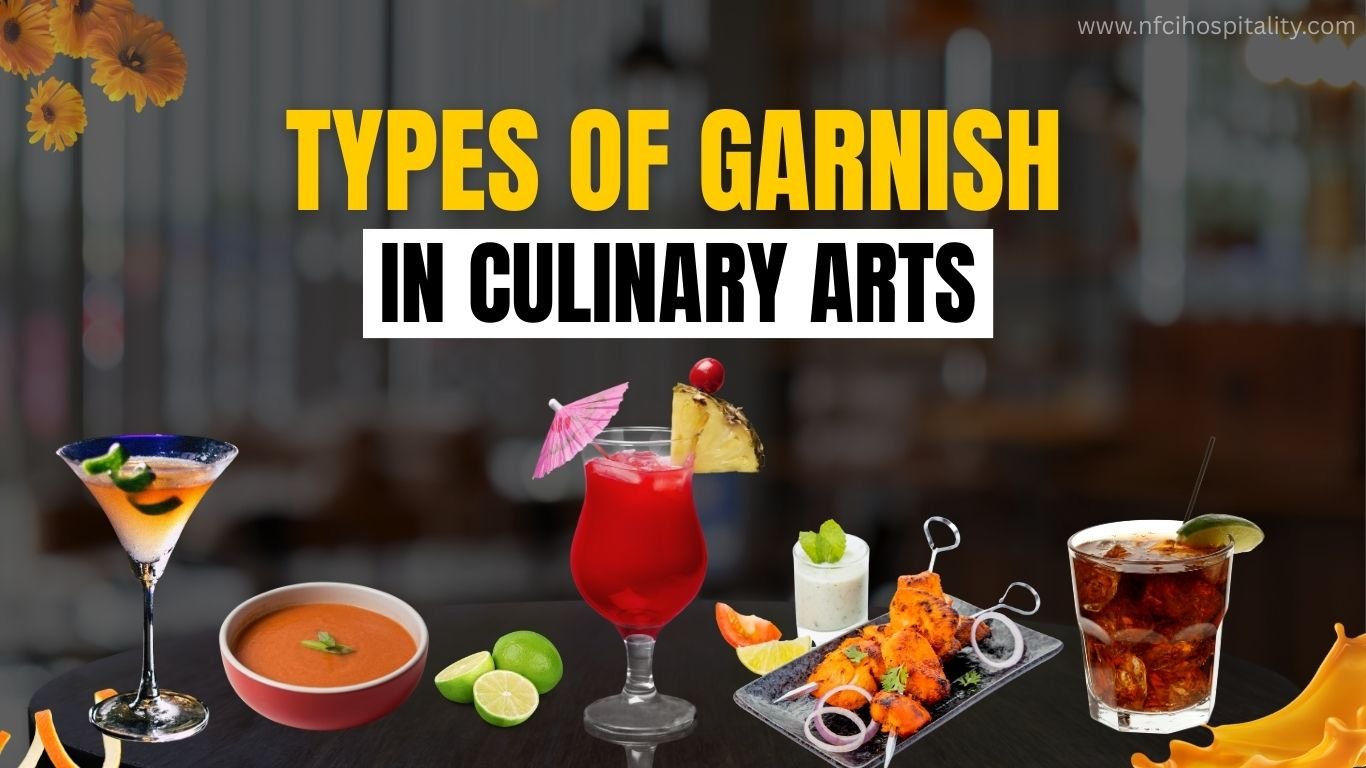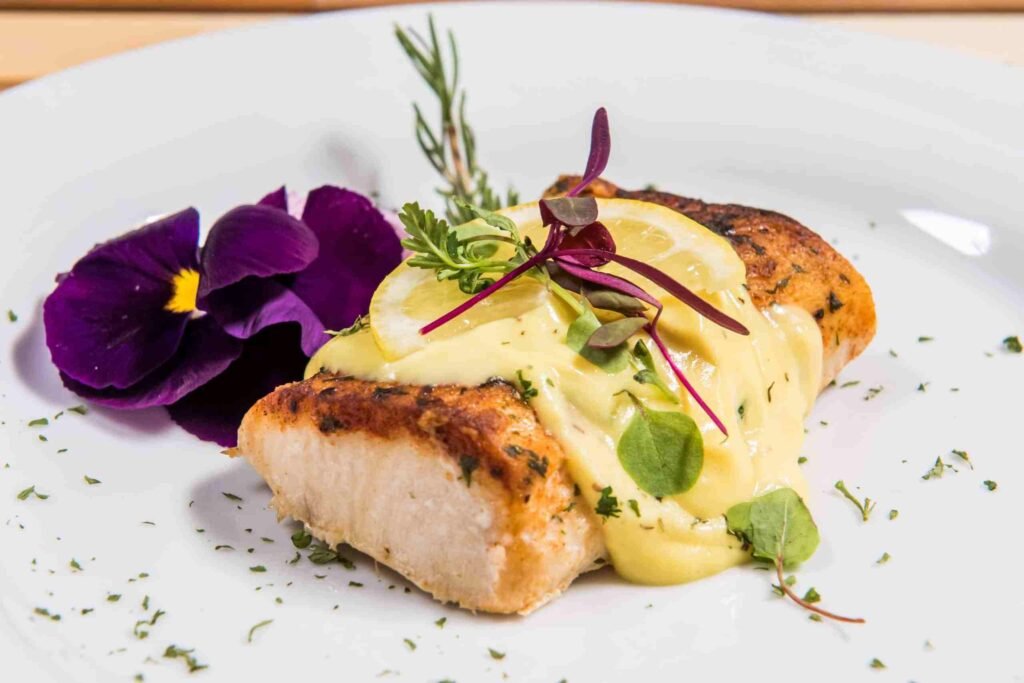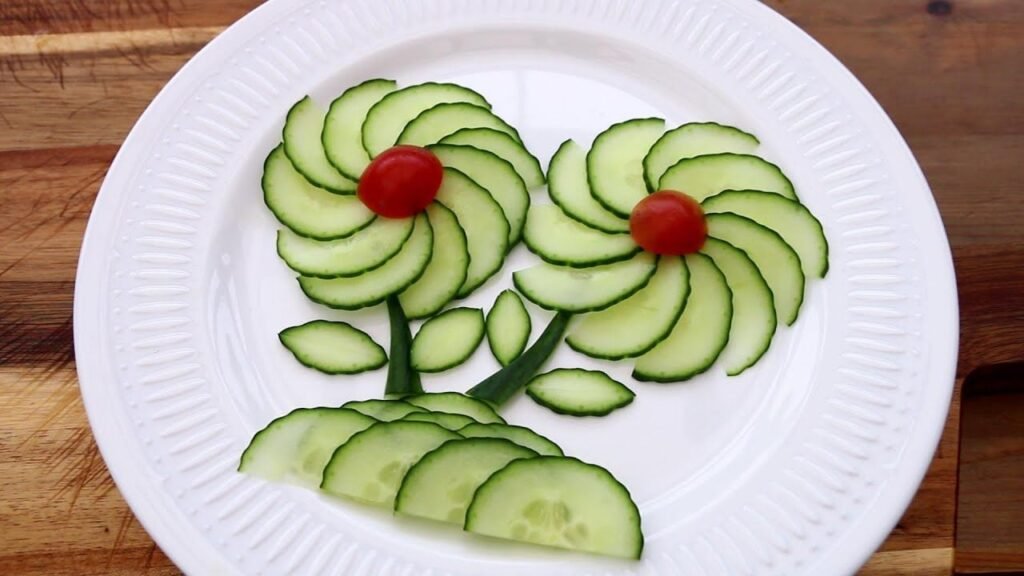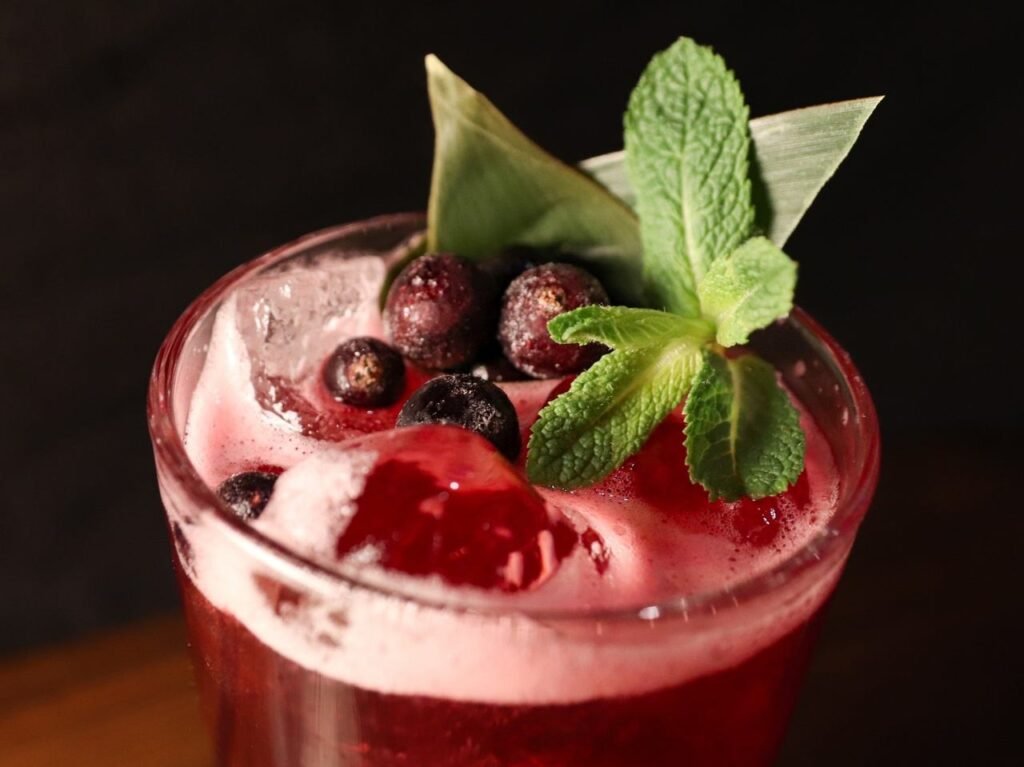
Types of Garnish in Culinary Arts
In the world of culinary arts, presentation plays an important role, just like taste. Whether it’s a street food or a five-star delicacy, the final touch that transforms a dish into a visual masterpiece is the garnish. It not only enhances the look of a dish but often adds subtle layers of texture and flavor too.

In this blog, we will discover the different types of garnishes used in modern and traditional culinary practices, and how learning them can make your dish capture the heart of your customers.
What is a Garnish?

It is a decorative element added to a dish after cooking. It can be an ingredient that complements the flavor, adds texture, or simply improves the presentation of food. In culinary language, it is the art of beautifying food — making it more appealing to people.
Types of Garnishes
-
Herb Garnish
Fresh herbs like coriander, mint, parsley, and basil are common choices. Their vibrant color and aroma make them perfect for both Indian and international cuisines.
-
Edible Flowers
Used in modern culinary plating, flowers like nasturtium, pansy, and marigold are used to give a fresh and fancy look.
-
Citrus Zest & Slices
Lemon or orange zest and citrus wedges are commonly used to decorate seafood dishes and desserts. They add brightness and balance.
-
Microgreens
Tiny greens packed with flavor and nutrition — microgreens are trending in high-end culinary spaces for salad and starter garnishing.
-
Spices & Seasonings
Paprika dust, black pepper, chili flakes, and chat masala are often sprinkled on dishes like soups, chaats, and curries.
-
Vegetable Carvings
Carved carrots, cucumbers, and tomatoes are used in traditional Indian culinary service as fancy garnishes, especially for buffets and platters.
-
Sauce Drizzles & Swirls
Plating isn’t complete without a chocolate swirl on dessert or a tangy chutney drizzle on a starter. This adds art to taste.
-
Fried or Crispy Garnish
Fried onions, sev, papads, or garlic chips add crunch — perfect for biryanis, salads, and fusion dishes.
-
Cheese Shavings or Crumbs
Grated parmesan or cheese crisps add flavor and elegance. It’s a must-learn technique in professional culinary arts.
-
Fruit Cuts & Twists
Lemon spirals, apple fans, or strawberry slices are not just for desserts — they are classic for mocktails and cakes too.
Why Garnishing Matters in Culinary Arts?

- Enhances visual appeal of food or drink.
- Adds flavor and aroma.
- Builds texture and contrast.
- Shows chef’s creativity and skill.
- Makes the dish Instagram-worthy!
Every great culinary presentation ends with a thoughtful garnish — because we eat with our eyes first. After all, we often crave what catches our eyes before it even touches our taste buds.
Learn the Art of Garnishing with NFCI!
At NFCI (National Finishing and Cookery Institute), students not only learn recipes but also gain the knowledge and skills in culinary presentation. From knife skills to plating aesthetics, NFCI’s certified programs prepare you for a rewarding career in the hospitality industry.
Why Choose NFCI?
- Approved Courses
- 100% Placement Support
- Culinary Arts, Bakery, Hospitality & More
- Learn from Industry Experts with Hands-on Practice
Join NFCI– Where Every Dish Begins with Passion and Ends with a Perfect Garnish!





